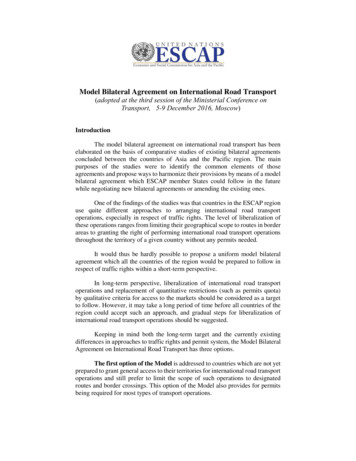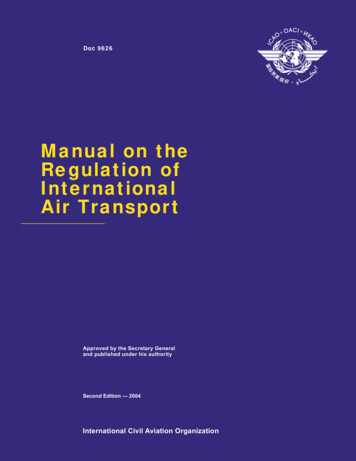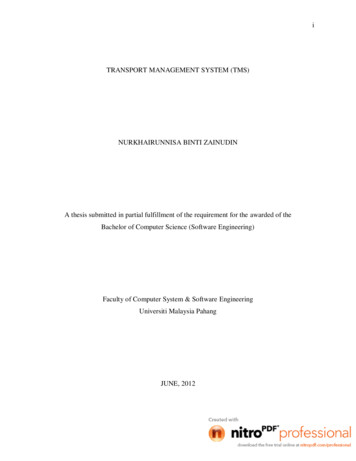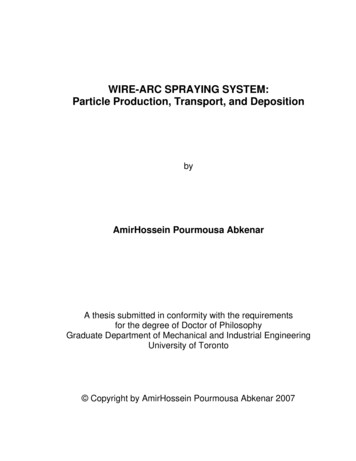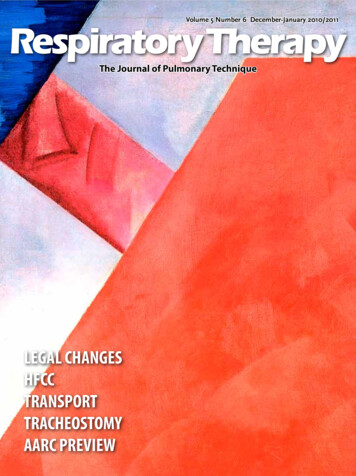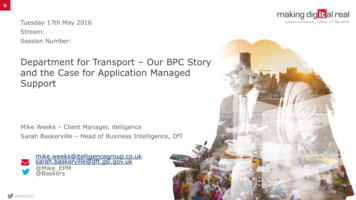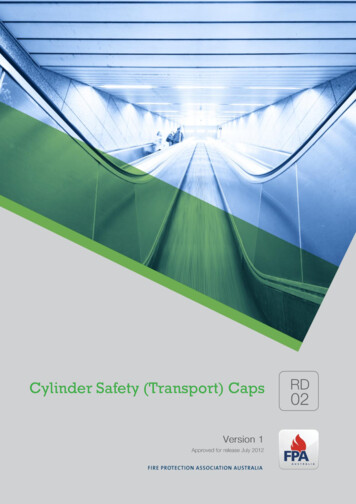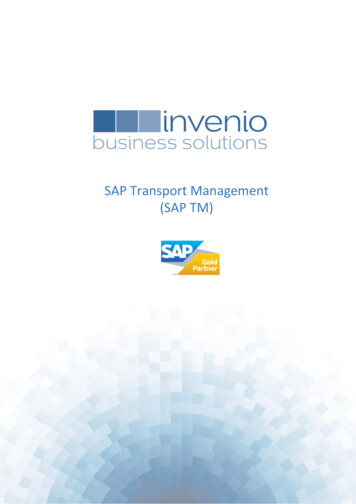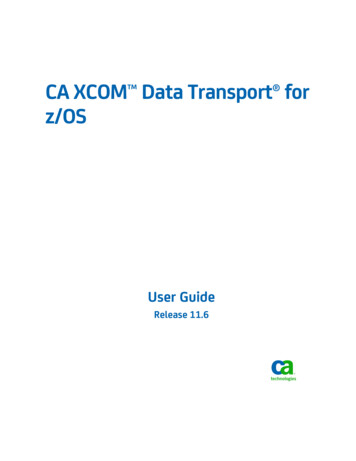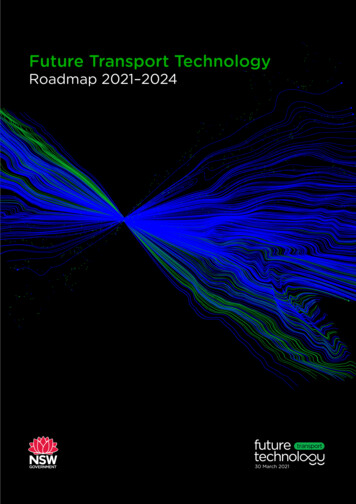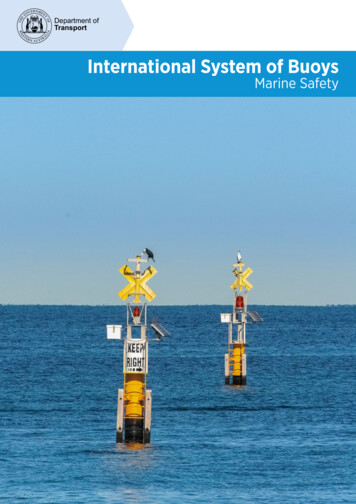
Transcription
Department ofTransportInternational System of BuoysMarine Safety1
IALA BuoyageAn international system of buoys, beacons and lights helps guide vessels clear of dangers and indicatessafe water. Navigation marks are recognised by distinctive shapes and colours, and their lights bydistinctive colours and rhythms.All these marks are on the chart – when you have any doubts what you are looking at always refer to the chart.Lateral MarksPort MarksThe marks indicating the port and starboard sidesof channels are called Lateral Marks. Those toppedby a red can shape are called Port Marks, and thosetopped by a green triangle shape are called StarboardMarks.Quick FlashingWhen entering harbours or travelling upstreamin a river, leave port marks on your port side andstarboard marks on your starboard side.When leaving harbours or travelling downstream,leave port marks on your starboard side andstarboard marks on your port side.FlashingGroup FlashingStarboard MarksOne way to remember this is the saying, “there’sUpstreaof fl m/diood rectitide onRed to greenFlashinganneldownstreamQuick FlashingDowKeepto your right ina chGroup FlashingIsolated Danger MarksGreen to greenupstreamnstreof e am/dbb irecttide ionsome red, port, left in the bottle” when travellingupstream.Lateral Marks are not always placed in pairs whereyou simply have to pass between them. Whenyou see just one, you will need to bear in mind theupstream–downstream principle.As the name suggests, it marks danger withnavigable water all around, too small to need markingwith a series of marks. In general, pass as well clearof it as you can.LightIf lit, it will have a white light, flashing in groups of two.The memory jog is two flashes to match the twosphere topmark.LightsWhen lit, Port Marks have red lights, Starboard Markshave green lights. These are the only marks to usethese colours. The light can be any rhythm, other thanComposite Group Flashing (2 1).Group Flashing (2)2
Safe Water MarksSpecial MarksThere is safe water all around this mark. Mostcommonly, it used to mark the seaward end ofchannels into ports. They are sometimes used tomark the centre of a channel; occasionally they areused in a series down the middle of a channel insteadof Lateral Marks on the edges of the channel.Marks used to indicate a special area or featurewhose nature may be apparent from reference toa chart or other nautical publication. They are notgenerally intended to mark channels or obstructionswhere other marks are more suitable.Some examples of uses of Special Marks: Traffic separation marks; Spoil Ground marks; and Aquaculture.IsophaseFlashingOccultingLightLong Flash 10sIf lit, a Special Mark will have a yellow light and mayhave any rhythm other than those used for whitelights on Cardinal, Isolated Danger or Safe Watermarks.LightIf lit, it will have a white light whose rhythms are listedabove. It may also use the Morse “A” rhythm.Navigation aid light characteristicsType of lightCharacteristicAbbr.DescriptionFixedFA light showing continuously and steadily.FlashingFlA light in which the total duration of light in a period is shorter thanthe total duration of darkness and the appearances of light (flashes)are usually of equal duration.Long flashingGroup flashingComposite groupflashingQuick flashingLFlFl(3)Fl(2 1)QA flashing light in which an appearance of light, of not less than2 seconds duration, is regularly repeated.A flashing light in which a group of flashes, specified in number, isregularly repeated.A light similar to a group-flashing light except that successive groupsin a period have different numbers of flashes.A continuous flashing light with a rate of 50 or 60 per minute.Very quick flashingVQA continuous flashing light with a rate of 100 or 120 per minute.OccultingOcA light in which the total duration of light in a period is longer than thetotal duration of darkness and the intervals of darkness (eclipses) areusually of equal duration.IsophaseIsoA light in which all the durations of light and darkness are clearlyequal.MorseMo(A)A light in which appearances of light of two clearly different durationsare grouped to represent a character or characters in the Morse Code.Period shown3
Cardinal MarksNorth CardinalThese are used where Lateral Marks would beinappropriate or confusing. They indicate thecompass direction of the safest water, so having acompass on board is very useful.You should pass to the east of an East CardinalMark, to the south of a South Cardinal, to the westof a West Cardinal Mark and to the north of a NorthCardinal Mark.The lights, topmarks and colour schemes have a logicto help you memorise them.The cones on the top point in the direction of theblack segment of the pillar:Very Quick FlashingQuick FlashingEast CardinalNorthboth cones top point up, black at the top ofthe pillar.Eastthe cones point up and down, black at topand bottom.Southboth cones point down, black at thebottom.Westthe cones point inwards, black in themiddle.Very Quick Flashing (3) 5sLights (white)Quick Flashing (3) 10sThe lights patterns almost follow the clock face:South Cardinal3 o’clock East Cardinal 3 flashes6 o’clock South Cardinal 6 flashes 1 long flash9 o’clock West Cardinal 9 flashes12 o’clock North Cardinal continuous flashing.The long extra flash for south, and the continuousflash for north are to avoid confusion if you lose trackwith your counting.NNWVery Quick Flashing (6) 1 Long Flash 10sNEQuick Flashing (6) 1 Long Flash 15sWest CardinalPOINTOFINTERESTWSWSES4EVery Quick Flashing (9) 10sQuick Flashing (9) 15s
LeadsSectored lightsLeads are a pair of marks that when aligned forma transit along the safe channel through shallowor dangerous waters. They are often used for theapproaches to anchorages (there are many atRottnest). You steer to keep the rear lead directlyabove the front lead.Sectored lights are navigation aids that indicate a safechannel through shallow or dangerous waters.Generally there are three lights of different colourseach identifying a sector of an arc. The white sectorwill generally be the safe water and the red or greensectors areas to avoid. It is particularly important tocheck the chart for the light’s meaning, purpose andto determine the extent of the safe passage.The recommended course is achieved by keepingwithin the white sector of the light. If the light colourshifts to red or green an adjustment of course isrequired to bring it back into the white and back ontrack.The course is achieved bykeeping the rear lead directly above the front leadLightsIf lit, they may use any colour. The chart will have thedetails.The course is achieved by keeping within the white sector5
ContactSafety EducationMarine Safety Business UnitDepartment of Transport1 Essex StreetFremantle 6160Western AustraliaMarine Safety Hotline: 13 11 56Email: marine.safety@transport.wa.gov.auWebsite: www.transport.wa.gov.au/imarineThe information contained in this publication is provided in good faith and believed to beaccurate at time of publication. The State shall in no way be liable for any loss sustainedor incurred by anyone relying on the information. Published: December 2019
IALA Buoyage An international system of buoys, beacons and lights helps guide vessels clear of dangers and indicates safe water. Navigation marks are recognised by distinctive shapes and colours, and their lights by distinctive colours and rhythms. All these marks are on the chart – when you have any doubts what you are looking at always refer to the chart. Lateral Marks The marks indicating .File Size: 1MBPage Count: 6
